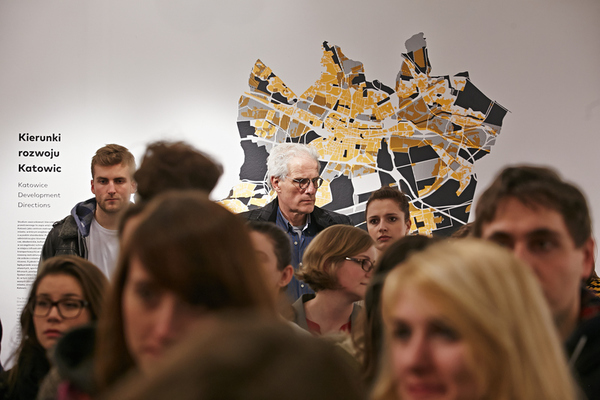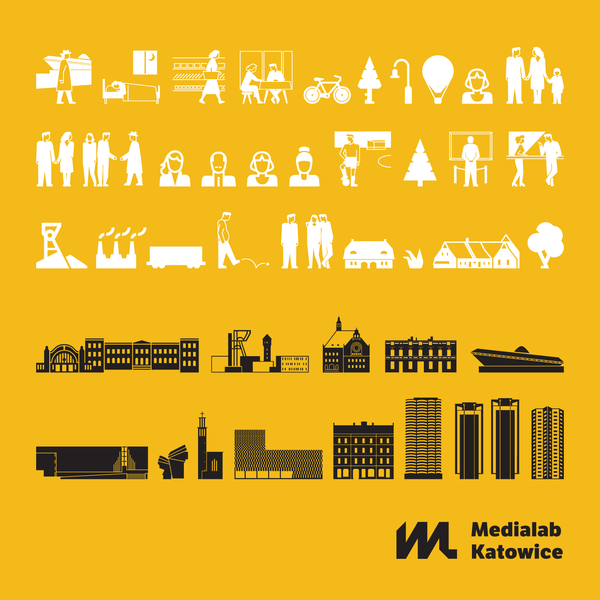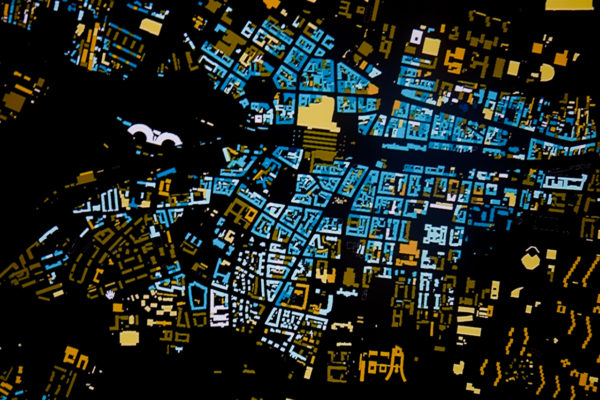Using the design process to create a suggestive visual language that makes it possible to present the city’s history through a narrative based on challenging its stereotypes.
The culmination of the Modern City in the Making workgroup’s effort was an exhibition titled the Appetite for Radical Change. Katowice 1865–2015, presenting the history of the city through maps, animations and data visualisation. The interdisciplinary project team of, including cultural researchers, designers, architects and spatial planners, took part in several meetings, workshops and lectures. Their task was not to create a universal and objective story about the city’s history, but to look at Katowice from a new perspective through the use of tools for data processing and visualisation.
The exhibition references the activities of the Isotype Institute and the universal visual language created in Vienna in the 1920s.
Inspiration came particularly from a series of innovative museum exhibitions staged in Austria’s capital at that time, and also from Otto Neurath’s famed Modern Man in the Making (1939), a history book describing the story of modern society in an accessible way. Our project’s title is an obvious reference to this publication.
The first stage of the project saw the participants learn about the history of Katowice and participate in Transformation and Visualisation, a seminar led by Isotype researcher Christopher Burke of the University of Reading. The most time-consuming during the project was to collect data on the city’s history. Fortunately, most of the information required was found in documents made available by the Silesian Digital Library.
The next challenge was to create a clear narrative, in order to avoid the problem of information overload and the desire to present all interesting facts in the history of Katowice without an organised hierarchy of content. This was accomplished through adopting a set of project principles as well as defining the purpose and audience of the project. Of particular help in this respect was the introduction of a narrative built around stereotypes about the city and the region. This facilitated the selection of appropriate content and made the experience far more engaging than it would have been with a linear narrative.
At the final stages of work we once again had to take a critical approach to the gathered content and adopted visualisation ideas. It was hard to resist the temptation of using the oh-so-trendy multimedia and interactive installations, even though common sense told us that the presentation of data on detailed large-format maps would create a more striking effect if they were plotter-cut out of PVC foil and stuck onto a white wall. Eventually we managed to find a balance between the dynamic media and the static elements produced using classic analogue methods. For the results of our team’s effort, please see Appetite for Radical Change. Katowice 1865–2015.


